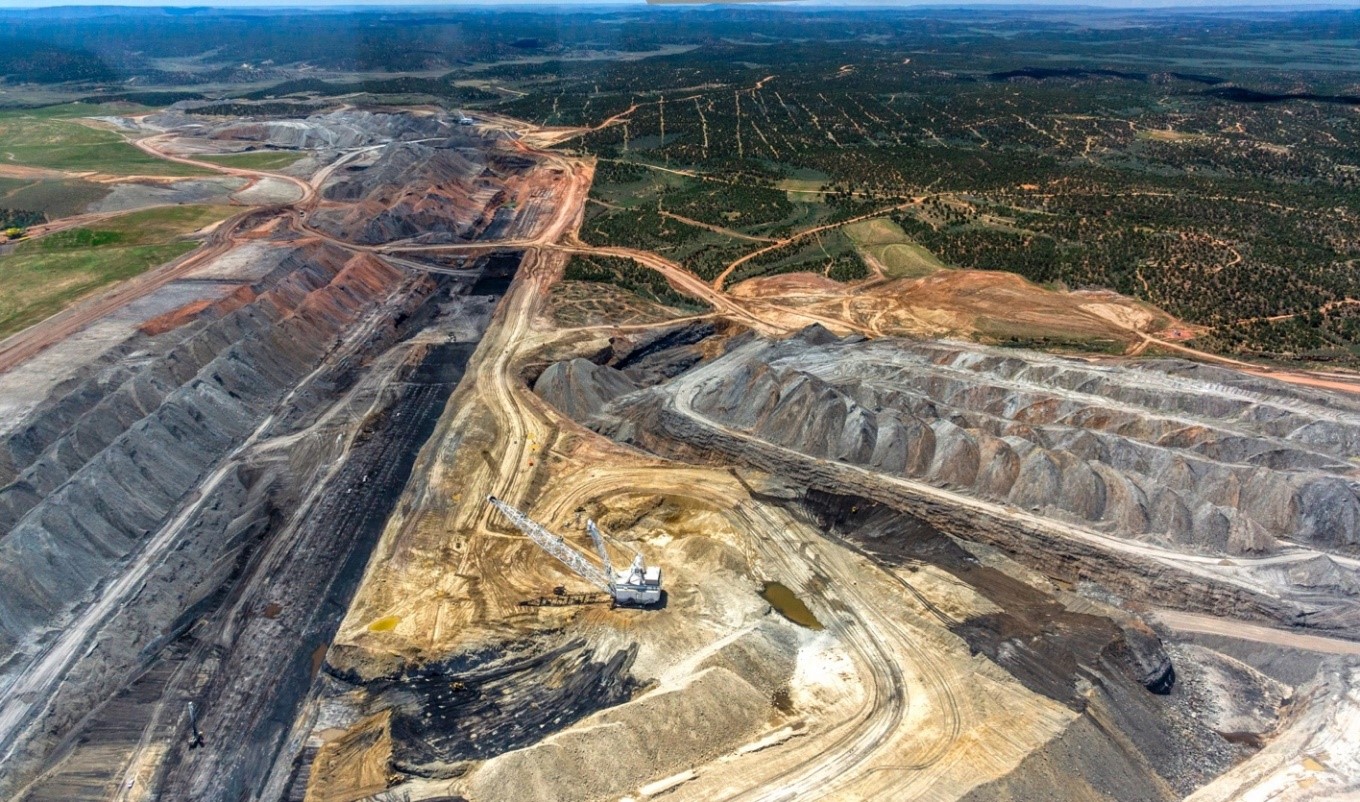IEEFA U.S.: Peabody abandons longtime Native American workforce before reclamation of Kayenta coal complex in Arizona

Image courtesy of EcoFlight
Aug. 5, 2019 (IEEFA U.S.) — As Peabody Energy ceases production this month at the Kayenta Mine complex in northern Arizona, the company plans to abandon its long-time workforce even as it faces a vast amount of reclamation responsibility in the area.
The company is abruptly discarding some 300 mine-complex employees this month, according to a report published today by the Institute for Energy Economics and Financial Analysis that details in aerial photographs and maps some of the vast post-coal cleanup Peabody is responsible for in the area.
The report—Peabody, in Kayenta Exit, Is Abandoning Native Workforce Ahead of Reclamation Work—notes that the company has filed a Worker Adjustment and Retraining (WARN) notice stating its intentions to terminate all workers at the mine before the end of August. Layoffs are to commence on Aug. 12.
The mine complex, which covers an area that has disturbed roughly 36 square miles of Hopi and Navajo lands, has been in operation since the 1970s supported by a workforce of largely Native American employees. The mine is closing because its sole customer, Navajo Generating Station (NGS), is slated to be retired in December.
The report notes that Peabody’s employee-dismissal strategy at Kayenta is seen as a corporate cost-cutting move that will rid the company of union-represented employees so that they can be replaced by scores if not hundreds of lower-cost reclamation workers.
“The layoffs are occurring even though Kayenta miners have the very expertise and heavy-equipment skills needed for the required reclamation work, which will take years to complete and require a sizeable workforce,” the report states.
The report also details Peabody’s policy of maintaining local public silence on its Kayenta strategy; its maneuvering aggressively for reclamation-bond release and cleanup payments from NGS owners; and its abandonment of a community that has supported the company’s coal-extraction activities for generations.
Report excerpts:
- “A vast amount of reclamation work remains to be done across several areas of the complex, including across open-pit operations and infrastructure holdings such as coal handling stations and shipment facilities, road networks and coal-transport facilities.”
- “While Peabody has not said how it will staff reclamation jobs, its employee- termination plan appears to be the product of a corporate strategy geared toward saving money by dismissing long-time employees and bringing in lower-paid contract workers. In any case, the company’s local contract with the United Mine Workers of America expires in September.”
- “Peabody is stepping up its efforts to cash out more than $100 million in bonds it has posted for cleanup work, a signal that the company is aiming for an aggressive timetable around its Kayenta exit.”
- “Peabody’s actions come at a time when other coal companies also are moving to strand whole communities through abrupt layoffs and cutting benefits and pensions, all while seeking to avoid making good on tax obligations.”
- “A post-coal reclamation economy can be developed around the closures of the Kayenta complex and the NGS power plant in a way that can treat the community far more responsibly than what Peabody apparently has in mind. Peabody itself estimates cleanup associated with the Kayenta complex will take at least two years and will employ almost 200 workers, estimates that—because they come largely from Peabody—may very well be underestimating the scope of the requisite reclamation.”
Full report here: Peabody, in Kayenta Exit, Is Abandoning Native Workforce Ahead of Reclamation Work
Author contact:
Karl Cates (New Mexico) 917 439 8225 [email protected]
Media Contact:
Vivienne Heston (New York) 914 439 8921 [email protected]
About IEEFA:
The Institute for Energy Economics and Financial Analysis (IEEFA) conducts global research and analyses on financial and economic issues related to energy and the environment. The Institute’s mission is to accelerate the transition to a diverse, sustainable and profitable energy economy.











